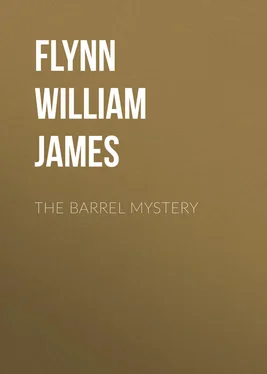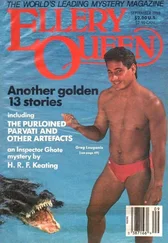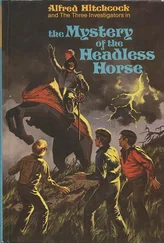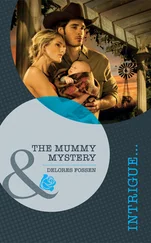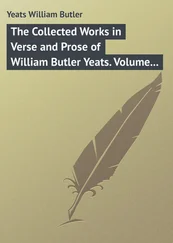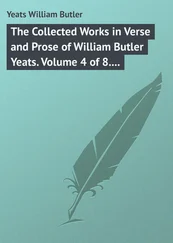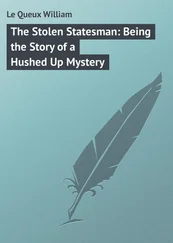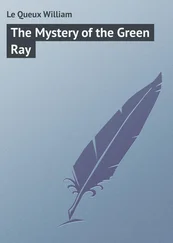William Flynn - The Barrel Mystery
Здесь есть возможность читать онлайн «William Flynn - The Barrel Mystery» — ознакомительный отрывок электронной книги совершенно бесплатно, а после прочтения отрывка купить полную версию. В некоторых случаях можно слушать аудио, скачать через торрент в формате fb2 и присутствует краткое содержание. Жанр: foreign_antique, foreign_prose, foreign_sf, на английском языке. Описание произведения, (предисловие) а так же отзывы посетителей доступны на портале библиотеки ЛибКат.
- Название:The Barrel Mystery
- Автор:
- Жанр:
- Год:неизвестен
- ISBN:нет данных
- Рейтинг книги:5 / 5. Голосов: 1
-
Избранное:Добавить в избранное
- Отзывы:
-
Ваша оценка:
- 100
- 1
- 2
- 3
- 4
- 5
The Barrel Mystery: краткое содержание, описание и аннотация
Предлагаем к чтению аннотацию, описание, краткое содержание или предисловие (зависит от того, что написал сам автор книги «The Barrel Mystery»). Если вы не нашли необходимую информацию о книге — напишите в комментариях, мы постараемся отыскать её.
The Barrel Mystery — читать онлайн ознакомительный отрывок
Ниже представлен текст книги, разбитый по страницам. Система сохранения места последней прочитанной страницы, позволяет с удобством читать онлайн бесплатно книгу «The Barrel Mystery», без необходимости каждый раз заново искать на чём Вы остановились. Поставьте закладку, и сможете в любой момент перейти на страницу, на которой закончили чтение.
Интервал:
Закладка:
William J. Flynn
The Barrel Mystery
CHAPTER I
THE BARREL MURDER
Where the East River swims around the foot of Eleventh Street is an old abandoned wooden dock that looks more like the broken skeleton of a buried wreck than the thing it used to be. A covey of barges are huddled against the wharf opposite, and this wharf gradually becomes solid pavement where the lumber yard begins. It fronts the street with the most dilapidated board fence in Christendom made up of broken odds and ends covered with a crazy patchwork of corrugated iron scrap stained and rusted by the weather. If an old-time pirate – one of those romantic devils with scarred and battered features and a black patch over one eye – should suddenly peer at you through one of the many cracks in the splintered stockade you could not be very surprised; in fact, you would almost expect it to happen.
Farther up is a livery stable, a mere hole in a pile of bricks, once red now slavered over with white-wash once white. Outside is a man clipping the mane of a truck horse with its harness dragging in the filth. On the corner is a saloon, such as you find on the East Side, shouldering against the dry dock storage for live poultry with chorus of cackling inmates. On the corner opposite is a huge, green cheese of a building occupied by various small manufacturers. The third corner bulges with the huge cisterns of the gas works soiled and smeared with soot and fumes. The fourth corner has become historic. Every Secret Service man in the city knows what is on the Northwest corner of East Eleventh Street and Avenue D. They know the old, battered red brick walls that belong to the New York Mallet Works, walls that look as if they have been scarred by a fusillade of machine guns, walls with rusted chicken-wire netting before windows that are never cleaned except when the rain is drumming against them, walls that are broken by a huge portal closed by a worm-eaten, wooden gate quite in keeping with the whole thing. There is a ramshackle tenement next door with rooms for rent and shutters all drawn – shutters that were doubtless a shrill green once upon a time but now camouflaged by the blasts of blistering sun and cutting rains into a crazy-quilt of strange hues, shutters maimed and broken and dangling and just hanging together. The only open aperture in the weird and forbidden dwelling is the entrance, breathing filth and the sour odor of poverty. Crowding close to the tenement is an almost cavernous fodder and feed store, its broken, soiled windows half-hidden behind shattered boards and laths from which remnants of bill-posters, stained and ragged, flutter now and then. A heap of rubbish, garlanded with a jumble of rusty wire and battered tin cans, adorns the broken curb. A pair of cast-off baby shoes with buttons dangling are sailing on a pool of dirty water.
Desolate as the spot is it appeared even more so on the morning of April fourteenth, 1903, in the haze and the drizzling rain of an early hour. But Mrs. Frances Conners, an Irish woman, did not notice these things as she crossed the spot on her way to the bakeshop to get rolls for breakfast. She was used to the place. Wrapped up in the red sweater affected by East Side women and bending her head under her umbrella, she paid no attention to the very things that would have made a stranger pause and gaze. As she slipped across the corner, however, she noticed a barrel standing on the curb in front of the mallet works. That barrel was not there the day before. It was quite a big barrel, the kind they use for shipping sugar. Her feminine curiosity was aroused and she retraced her steps. In this instance curiosity revealed a deed that horrified the entire country, frightened the citizens of New York, and threw the Detective Bureau at Police Headquarters into a panic. The revelation also brought home to many people the disquieting realization that there were assassins in our midst that defied the efforts of our police to cope with them.
An overcoat was thrown over the top of the barrel. It was fairly damp but not quite wet, indicating that it could not have been there very long. Mrs. Conners raised the coat. Quickly she let it drop and screamed. There was a man's body crushed into the barrel. The body was in a doubled-up position, both feet and one hand sticking over the rim of the barrel.
Summoned by Mrs. Conners' screams the neighborhood was on its feet in an instant. A panicky crowd gathered on the fateful corner listening with gaping mouths and blanched faces to the frightened chatter of the Irish woman. Morbid curiosity prompted a few to raise the coat and take a look. Every time this was done some of the women would scream hysterically.
A policeman came running up. The body in the barrel was still warm when the officer examined it after rolling the barrel over and dragging the victim out. About the dead man's neck was wound a strip of gunny-sack. When removed it revealed more than a dozen wounds any one of which would have resulted in death. An ambulance surgeon came at a gallop. He declared that the man could not have been dead more than two hours at the most.
The corpse was taken to the Union Market Police Station. The examination made there led to the conclusion that the victim was a man about the age of forty. His complexion was swarthy and his ears were pierced with rings. The clothing about the dead man's body was of good quality, and there was nothing about the physical make-up to indicate that he belonged to the laboring class. The forehead was of the high, receding type, and it was partly covered with thin, curly hair of a light-brown tinge. The moustache was turning grey. On the left cheek were two scars an inch or more in length forming the letter "V" inverted. It was an old scar.
A closer inspection of the body revealed that at least two weapons must have been used by the assassin or assassins. A narrow, two-edged blade had evidently been used for inflicting the wound just below the left ear. This stab was made by a powerful hand for it was at least three inches deep. A wound above the Adam's apple penetrated sheer to the spinal cord, and was doubtless done by the same weapon. Numerous other and smaller wounds were of a like character. A slash extending from ear to ear across the throat was probably done with a long, sharp blade.
In searching the clothing of the dead man a little brass bound crucifix was found. It was of foreign make with a Latin motto on the scroll work above the figure of the Saviour, and a skull-and-cross-bones at the base of the crucifix. This was found in a waistcoat, in which we also located a silver watch-chain similar in make to those common to the peasantry of Southern Italy. The crucifix was one that is not common to any locality. There was an overcoat on the body, and in one of the pockets two handkerchiefs were found, one of which was small in size and faintly perfumed. The only identification mark on the clothing was on the shoes, which were marked "Burt & Co., opposite Produce Exchange." The shoes were worn, and there was a small patch on one of them. The gunny sack about the throat was marked by the blood stains only. Stencilled on the barrel were the initials "W & T" on the bottom; on the sides "G 233." It was a regulation sugar barrel, and the bottom was covered with about three inches of sawdust soaked with blood. Onion peels and some stubs of cigars of the stogie make were scattered in the sawdust, the kind of cigars that are sold in Italian stores and bar-rooms. A charred note in the handwriting of a woman was found in the barrel. Two written lines were in part legible: "Giorne che venite – subito l'urgenza." Translated the words might read: "Day that you come – suddenly the urgency."
Every device of detection known to the New York Detective Bureau was brought into service. Inspector George W. McCloskey, head of the bureau in person, aided by picked men, scoured every nook and corner of New York in an effort to learn, first of all, the identity of the victim. The whole uniformed force was also instructed to follow any little lead of information which might indicate a connection with the murder. No identification, however, developed.
Читать дальшеИнтервал:
Закладка:
Похожие книги на «The Barrel Mystery»
Представляем Вашему вниманию похожие книги на «The Barrel Mystery» списком для выбора. Мы отобрали схожую по названию и смыслу литературу в надежде предоставить читателям больше вариантов отыскать новые, интересные, ещё непрочитанные произведения.
Обсуждение, отзывы о книге «The Barrel Mystery» и просто собственные мнения читателей. Оставьте ваши комментарии, напишите, что Вы думаете о произведении, его смысле или главных героях. Укажите что конкретно понравилось, а что нет, и почему Вы так считаете.
